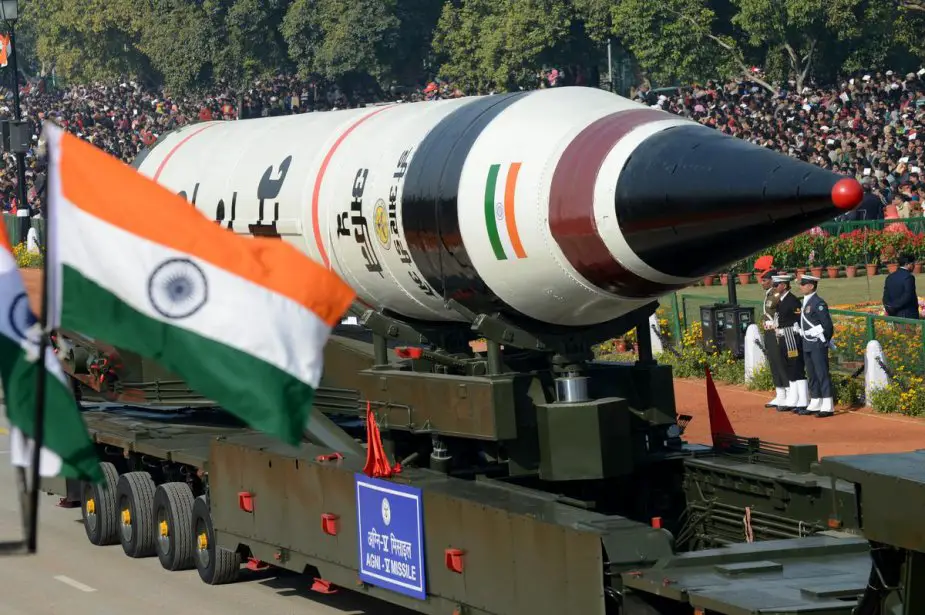India Succefully Test AGNI-5 Ballistic Missile with multiple warhead
The Indian Defence Research and Development Organisation (DRDO) completed the inaugural test flight of the Agni-5 missile, a domestically developed armament under 'Mission Divyastra,' as announced by Prime Minister Narendra Modi on March 11, 2024. He extended his congratulations to the DRDO team for their work on this sophisticated missile, which incorporates "Multiple Independently Targetable Re-entry Vehicle (MIRV)" technology.
Follow Army Recognition on Google News at this link

AGNI-5 ICBM presentation (Picture source The Hindu )
Prime Minister Modi expressed his pride via X, stating: "Proud of our DRDO scientists for Mission Divyastra, the inaugural flight test of the domestically developed Agni-5 missile equipped with Multiple Independently Targetable Re-entry Vehicle (MIRV) technology."
This achievement positions India among a limited group of nations capable of wielding a weapon system featuring MIRV technology (multiple independently targetable reentry vehicles). The MIRV technology allows each warhead to have a different and independent target, the same as the French M51 or Russian Sarmat. The Agni-5 missile reaches a 5000 km range is powered by a three-stage solid-fuel engine and is capable of carrying nuclear warheads.
The missile was designed to be easy to transport by road, through the utilization of a canister-launch missile system, which is distinct from those of the earlier Agni missiles. This missile is outfitted with locally produced avionics and precision sensors, enabling its re-entry vehicles to hit targets with good accuracy. As a result, the missile's range covers nearly the whole of Asia, including the northern parts of China and parts of Europe, placing these regions within its potential covering zone.
developped since 2007 the Agni-V, was planned to be operational by 2014 to 2015 after four to five repeatable tests, a time scheduled that proved too optimistic. Indian authorities believed that the solid-fuelled Agni-V is more than adequate to meet current threat perceptions and security concerns. Even with a range of only 5,000 km, the Agni-V could hit any target in China, including Beijing. The missile will allow India to strike targets across Asia and into Europe. The missile's range will allow the Indian military to target all of China from Agni-V bases, in central and southern India, further away from China.
The Agni series, comprising missiles Agni 1 through 4 with ranges spanning from 700 km to 3,500 km, has already been deployed. The development of the Agni missiles commenced in the early 1980s as part of the Integrated Guided Missile Development Programme, led by the renowned scientist and former President Dr. A P J Abdul Kalam, a pivotal figure in India's missile and space ventures.
The range of the AGNI-5 allows India to have a massive deterrent tool, especially important in the context of rising tensions at the border with China and the border with Pakistan. India hopes that this missile will help to reduce the intensity of tensions in the Kashmir Region.
Defense News March 2024
- Hits: 2077
















